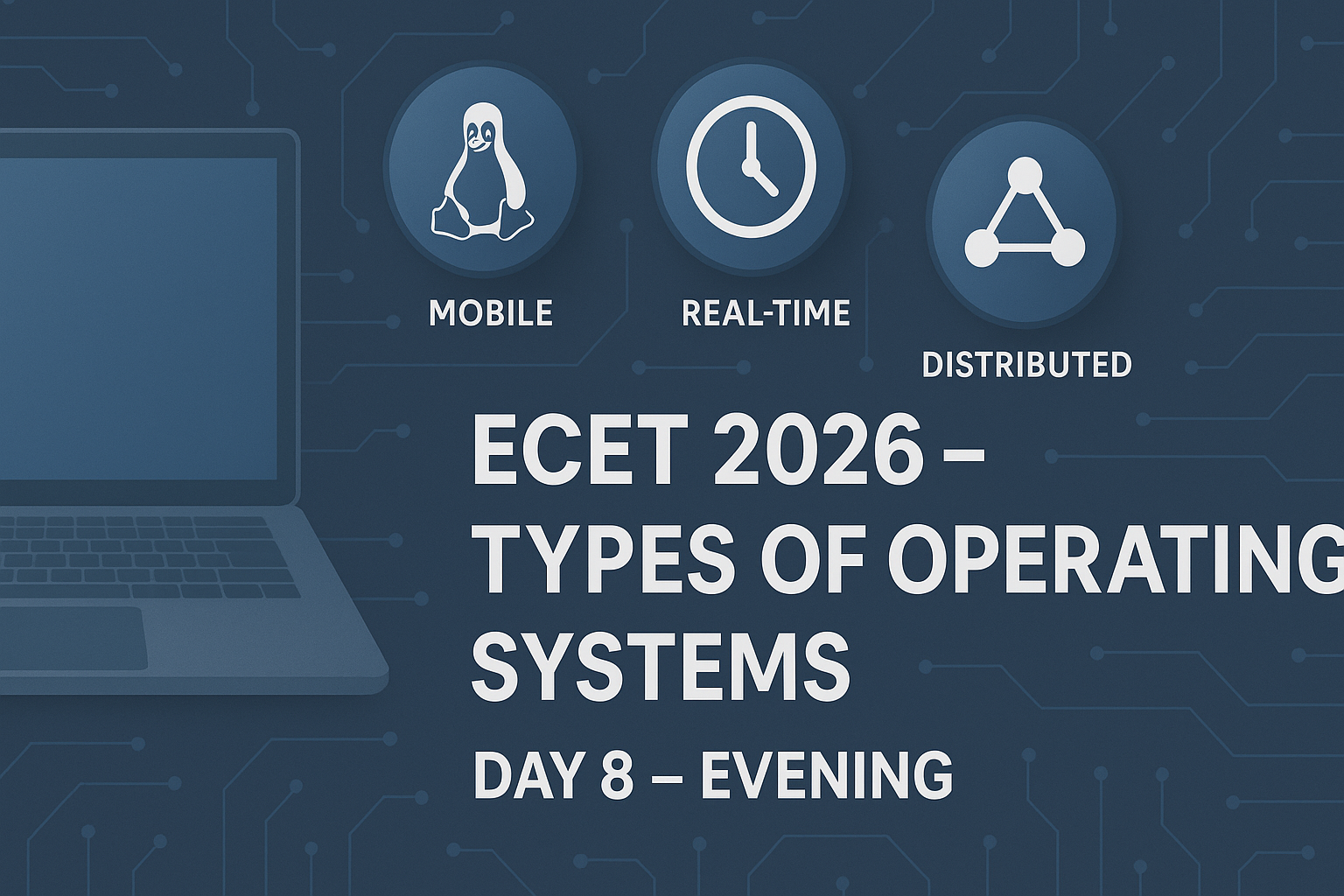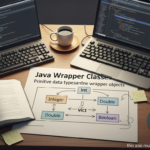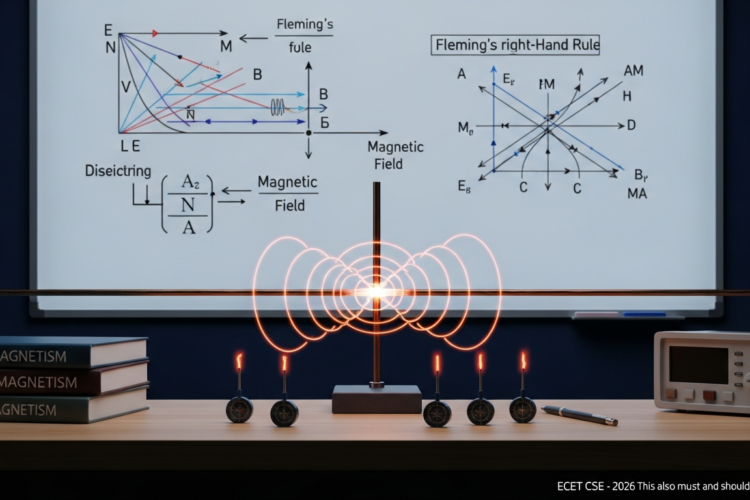
As you prepare for ECET 2026, the Operating System subject continues to be a high-scoring area for CSE students. One of the most repeated and conceptual topics in OS is the Types of Operating Systems. Questions from this section often appear in ECET, APECET, and TSECET papers, and mastering them helps you answer confidently. Below is your complete guide, with clear notes, 10 exam-focused MCQs, and explanations.
📘 Concept Notes – Types of Operating Systems
An Operating System (OS) is system software that manages hardware, software, memory, and processes in a computer. Depending on the structure and user environment, OSes are classified into several types.
🖥️ Types of Operating Systems:
- Batch Operating System
- No direct interaction with users.
- Jobs are grouped and executed in batches.
- Common in early computers.
- Example: IBM OS/360
- Time-Sharing Operating System
- Multiple users can access the system simultaneously.
- Time is divided into small time slices.
- Example: UNIX
- Distributed Operating System
- Manages multiple independent computers as a single system.
- Provides resource sharing across systems.
- Example: LOCUS, Amoeba
- Network Operating System
- Manages data and users over a network.
- Focuses on file sharing, printer access, etc.
- Example: Windows Server, Novell NetWare
- Real-Time Operating System (RTOS)
- Responds to input immediately.
- Used in embedded systems, robotics, etc.
- Two types: Hard RTOS (strict timing) and Soft RTOS (less strict)
- Example: VxWorks, RTLinux
- Multiprogramming Operating System
- More than one program is in memory and runs concurrently.
- Improves CPU utilization.
- Example: UNIX, Linux
- Multitasking Operating System
- Allows a single user to perform multiple tasks simultaneously.
- Example: Windows, macOS
- Mobile Operating System
- Designed for smartphones and tablets.
- Example: Android, iOS
🔑 Key Points to Remember:
- Batch OS → No user interaction
- RTOS → Real-time response
- Distributed OS → Resource sharing across systems
- Multitasking ≠ Multi-user
- Mobile OS is specialized for handheld devices
🔟 10 Most Expected MCQs – ECET 2026 [Types of OS]
Q1. Which OS executes jobs in a group without user interaction?
A) Real-Time OS
B) Distributed OS
C) Batch OS
D) Network OS
Q2. Which OS gives real-time output?
A) Batch OS
B) RTOS
C) Time-Sharing OS
D) Mobile OS
Q3. An OS that supports multiple computers working as one system is:
A) Time-Sharing OS
B) Distributed OS
C) Network OS
D) RTOS
Q4. Which OS manages printers and file sharing over LAN?
A) Mobile OS
B) Batch OS
C) Network OS
D) Distributed OS
Q5. Which OS is used in smartphones?
A) RTOS
B) Mobile OS
C) Multitasking OS
D) Distributed OS
Q6. An OS that allows multiple programs in memory at once is:
A) Batch OS
B) Multitasking OS
C) Multiprogramming OS
D) Time-Sharing OS
Q7. Which is a characteristic of Time-Sharing OS?
A) Processes run sequentially
B) Real-time output
C) Simultaneous multi-user support
D) Single task only
Q8. VxWorks is an example of:
A) Mobile OS
B) Real-Time OS
C) Network OS
D) Distributed OS
Q9. Linux is an example of:
A) RTOS
B) Batch OS
C) Multiprogramming OS
D) Mobile OS
Q10. Android OS belongs to which category?
A) Real-Time OS
B) Mobile OS
C) Network OS
D) Distributed OS
✅ Answer Key Table
| Q.No | Answer |
|---|---|
| Q1 | C |
| Q2 | B |
| Q3 | B |
| Q4 | C |
| Q5 | B |
| Q6 | C |
| Q7 | C |
| Q8 | B |
| Q9 | C |
| Q10 | B |
🧠 Explanations of All Answers
- Q1 → C: Batch OS runs jobs without user interaction in batches.
- Q2 → B: RTOS provides immediate response and is used in real-time environments.
- Q3 → B: Distributed OS handles multiple systems as one logical unit.
- Q4 → C: Network OS handles network-based resource sharing.
- Q5 → B: Mobile OS like Android or iOS run on handheld devices.
- Q6 → C: Multiprogramming allows several programs to run in memory.
- Q7 → C: Time-sharing OS enables multiple users simultaneously using time slices.
- Q8 → B: VxWorks is a widely-used real-time operating system.
- Q9 → C: Linux supports multiprogramming and multi-user features.
- Q10 → B: Android is a mobile operating system.
🎯 Why This Practice Matters for ECET 2026
Types of Operating Systems is a frequent topic in ECET 1-mark questions. You can expect at least 1–2 direct MCQs from this section. Knowing the types, examples, and features helps you answer faster and more accurately. This is a great revision topic for last-minute prep and interview basics.
📲 Join Our ECET Prep Community on Telegram
Get daily MCQs, downloadable PDFs, video revisions, and practice quizzes exclusively for ECET aspirants.
👉 Join now: @LearnNewThingsHub



